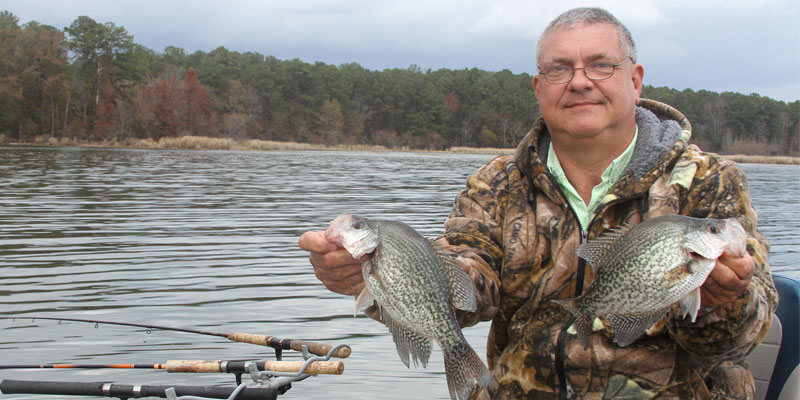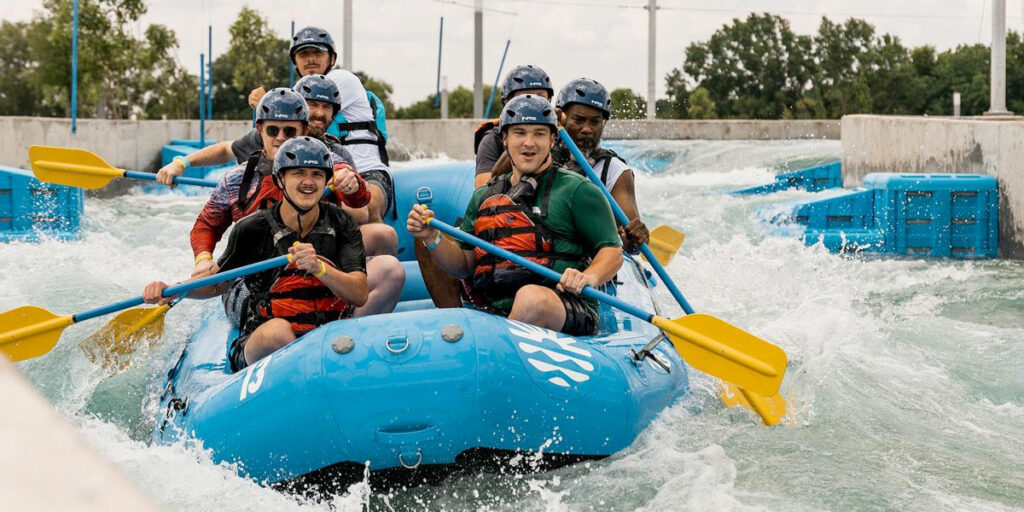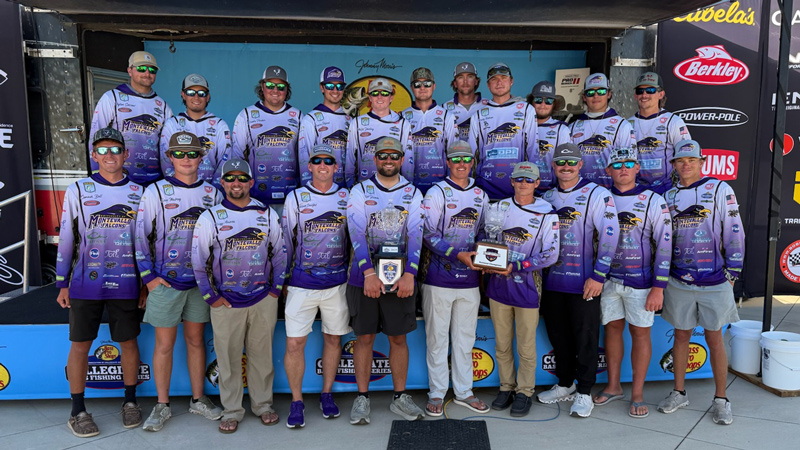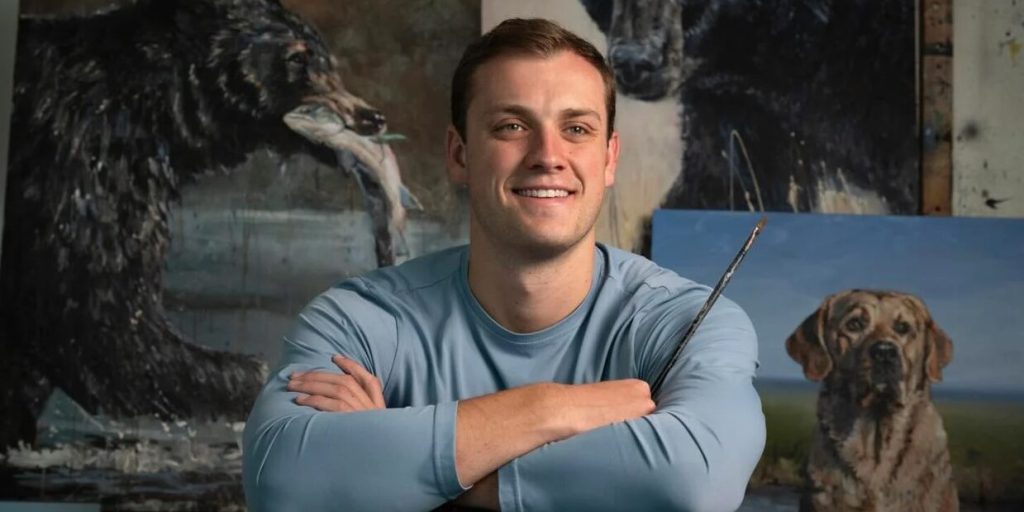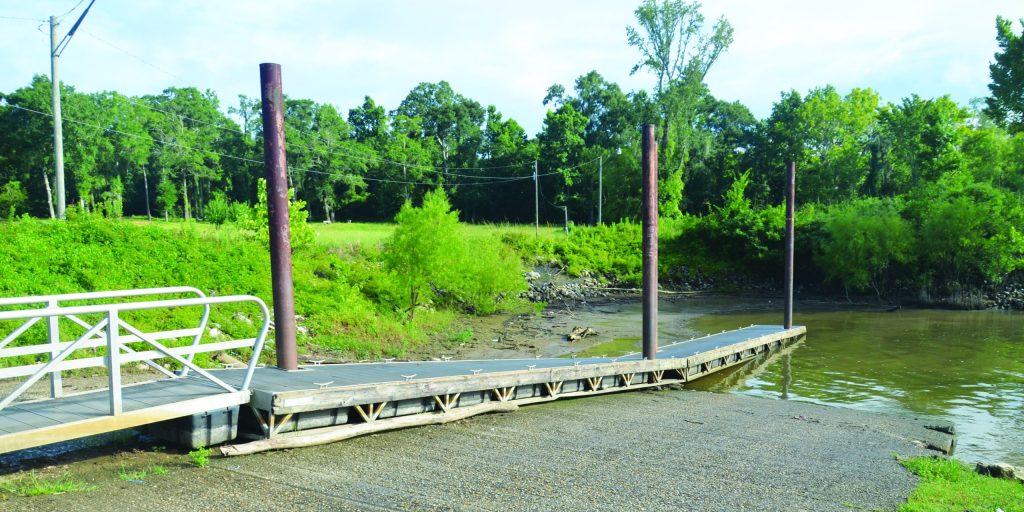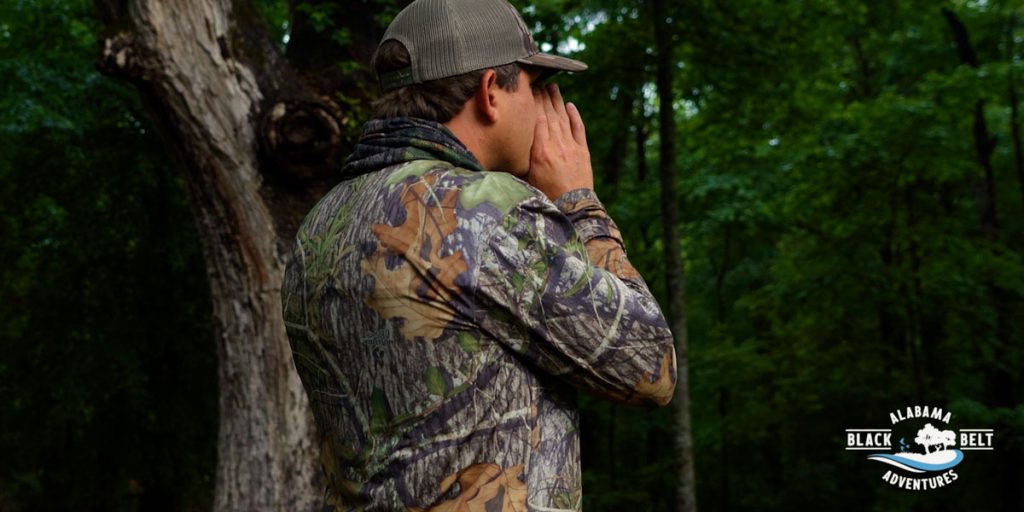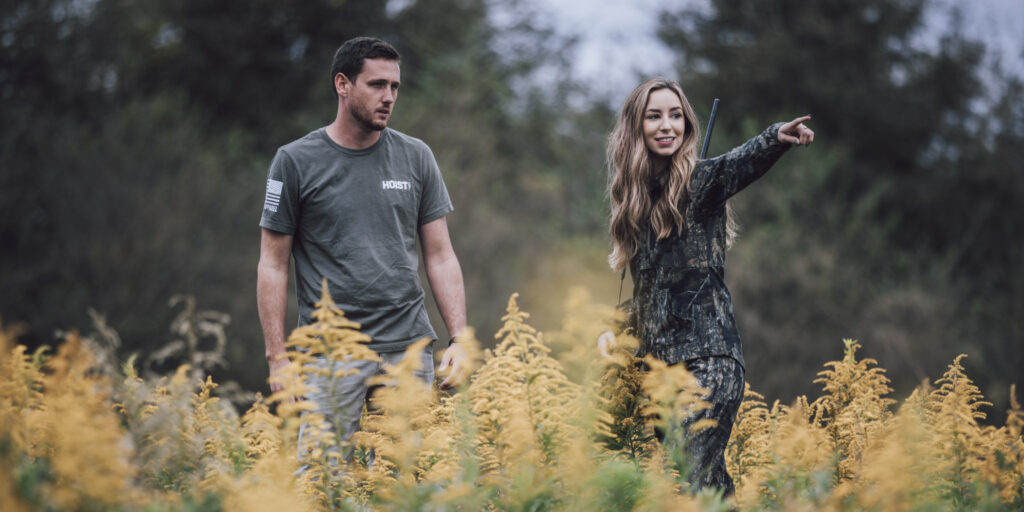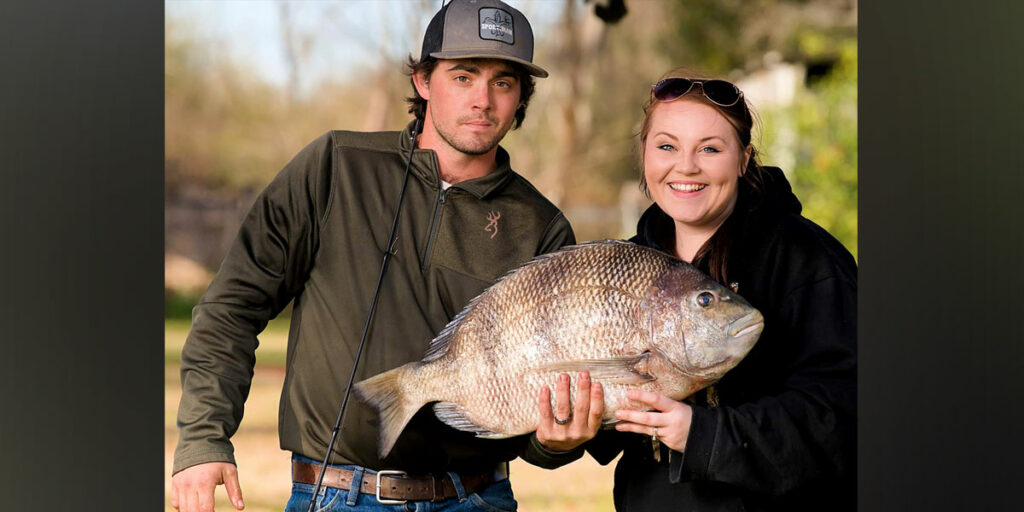Of all the outdoor experiences my mother, now 86, enjoyed the most, it was watching a cork disappear as a slab crappie grabbed the minnow at the end of the line.
As is normal procedure, I check in on her every few days, and she wanted to know what I’d been doing.
“Catching crappie,” I said.
“I didn’t think you could catch crappie this time of year,” she responded.
“Well,” I said, “You haven’t been crappie fishing with Tony Adams.”
Adams is the fish-catching wizard who can catch crappie any time of year on his home impoundment – Lake Eufaula.
Although Eufaula is known as the “Bass Capitol of the World,” Adams spends most of his time on the water catching crappie.
When most folks in the outdoors community are in the woods chasing whitetails or cottontails, Adams is locating the likely spots where crappie congregate this time of year. He uses his Humminbird Helix 12 bottom machine (manufactured in Eufaula) to locate the fish on the spots he has found over the years. He uses the side-scanning feature to locate the spot and then switches to down-scanning to pinpoint where the fish are located on the structure.
“I find structure in 15 to 20 feet of water,” said Adams, who manages the Eufaula Marvin’s building supply store when he’s not catching crappie. “When I see the fish on the Humminbird, I’ll drop down a minnow anywhere from 8 to 10 to 12 feet, depending on where the fish are holding.”
Adams uses 10-foot B&M poles and spinning reels with 6-pound-test, high-viz line. When the fish are deeper in the winter, he uses a No. 2 gold hook and a split-shot pinched 12 to 18 inches above the hook. If it gets a little windy, he’ll use a second split-shot to keep the bow out of his line.
The reason he uses the high-viz line is because it’s a lot easier to watch during the sunny, clear days.
“Obviously, you watch your rod tip, but I also watch that line,” Adams said. “Sometimes crappie will bite and come up with it. You can tell by the slack in the line that you’ve got a fish.”
When Adams hits the lake, he always has a bait bucket or two with plenty of minnows.
“In the summer, I’ll tip a jig with a minnow and bounce it off the bottom,” he said. “In the winter, I just use a minnow.”
Adams prefers to hook his minnow through the bottom lip and through the hard cartilage on the front of the head to allow more action from the bait.
“In the wintertime I try to keep the bait right at about the depth the fish are holding,” he said. “Then we just wait to see that rod tip bounce or go down and then pull in a slab.”
Of course, the weather plays a significant role in his fishing success during the winter, especially the wind. The cold doesn’t bother him. He just adds more clothes. It’s the wind that dictates his strategy.
“During the winter, the less wind there is, the better the fishing I can do,” he said. “You have to keep the bait in front of the crappie most of the time. The fish are in big schools on the structure. The more time you can have that minnow in front of the crappie, the better your chances of catching them.”
Adams said the wintertime pattern kicks off on Lake Eufaula around the first of December, and crappie will remain on structure until the weather starts to warm in February.
“In the middle of February, they’ll start moving into the mouths of the creeks to do some pre-spawning,” he said. “We’ll start catching a lot more fish in the creeks. Then when they move up to spawn, we’ll catch a lot of fish in the creeks. That’s when I start throwing jigs around the grass, the rocks and bridge pilings. I’ll be shooting (casting underneath) docks because the fish are getting shallow. On Lake Eufaula, it seems the bigger fish come up first. In the spring, sometimes they’re in 12 inches of water all the way down to 5 feet of water. Some of them spawn in 5 feet of water. Sometimes they’ll spawn deeper than at other times.”
Adams will do two things while the crappie are in their transition period from spawn to summer. He catches plenty of catfish, but he also makes sure plenty of structure will be available to fish for the summertime and wintertime patterns.
“While the fish are spawning, I’ll put structure out in deeper water,” said Adams, who uses mainly bamboo but will also sink crepe myrtles and small cedars. “I’ll take a 5-gallon bucket, fill it about halfway with water. I’ll pour in some concrete mix. I’ll have the bamboo already trimmed at the bottom and start sticking it into the concrete. I’ll make sure the bamboo is sticking in every direction. Then I’ll look for spots where the new structure will cover about half the water column. If I’m going to put it out in 20 feet of water, I’ll have the bamboo about 10 feet tall. ”
“Right about Memorial Day is when the crappie are back on that heavy structure in the middle of the lake,” he said.
On our trip last week, we hit the lake with a cold front approaching. It was the kind of day a bass fisherman dreams of – cloud cover with mild temperatures and the barometer falling. Those conditions usually put the bass species into a feeding frenzy.
We found out that doesn’t translate to crappie fishing. With a light fog and heavy cloud cover, the fish weren’t really in a biting mood. We’d catch two or three fish in one spot and then have to move to find a few more.
Then – cue the Hallelujah Choir – the sun broke through the clouds, and the bite began in earnest. Within six or seven minutes, we had put 10 nice keepers in the boat. That trend continued until the approaching front forced us back to the boat ramp.
“My favorite time to fish is when the sun is shining,” Adams said. “I think the fish get tighter to the structure. I also think maybe the sun shining may give that minnow a different kind of look in that deep water. That sunshine seems to kick off the bite. We definitely did a lot better when the sun was shining.”
Back to the wind, which will determine whether it’s worth launching the boat on certain days.
“On a real windy day, it’s hard to crappie fish,” he said. “Based on where you are in the lake, if you have 6- to 7-mile-per-hour winds, it could be white-capping. That will mean 15-inch to 2-foot waves. That minnow is moving up and down with the waves, which is not natural. With the crappie not as aggressive in the wintertime, they’re not going to bite something moving like that. I’m looking for 5 miles an hour or less. Calm is even better. Cold is not a problem. You can drop that minnow right in front of his face. It may take him a few minutes to hit it, but he will eventually hit it.”
Although we didn’t use any types of bobbers to catch the fish, I’m sure my mom won’t mind when I fry her up a batch of fillets from the 38 crappie we put in the ice chest.
David Rainer is an award-winning writer who has covered Alabama’s great outdoors for 25 years. The former outdoors editor at the Mobile Press-Register, he writes for Outdoor Alabama, the website of the Alabama Department of Conservation and Natural Resources.




